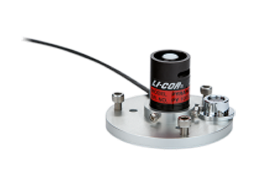The amount of radiation incident on a given flat (not necessarily level) surface area varies with the angle of incidence. Lambert's cosine law says that the radiant intensity observed from an ideal diffusely reflecting surface is directly proportional to the cosine of the angle of incidence.
When radiation strikes a given surface area at a greater angle of incidence, less radiation is received on that surface (see Figure 5‑2). For instance, when radiation strikes a given unit area at a 60° angle of incidence, half as much is received compared to a 0° angle of incidence. The same amount of radiation is spread over more surface area at a 60° angle of incidence.
Cosine Correction
A cosine-corrected sensor follows Lambert's cosine law and provides the most accurate measurements of radiation on a flat surface from all angles. Cosine correction ensures accurate measurements under various conditions such as low light levels and low solar elevation angles.
The LI-200R is fully cosine-corrected, with sensitivity to light nearly equal at all angles of incidence to about 82° angle of incidence (). Errors are typically less than ± 5% for angles less than 82° from the normal axis. At 90°, a perfect cosine response would be zero, and any error at that angle is infinite.

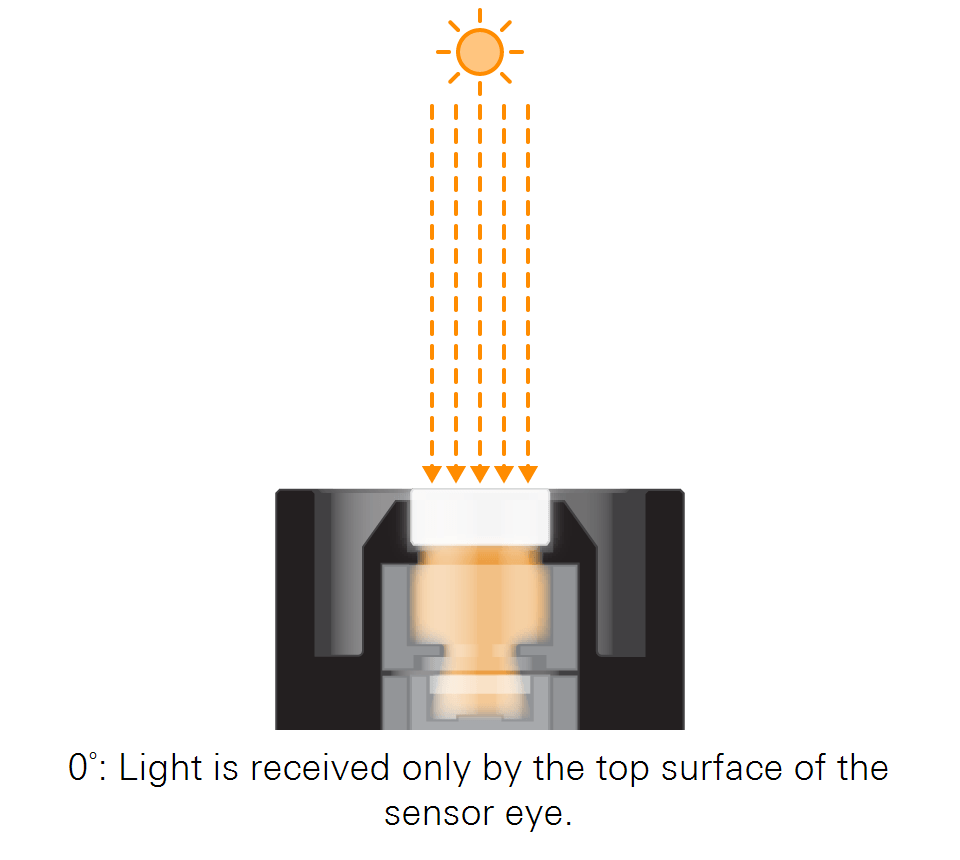
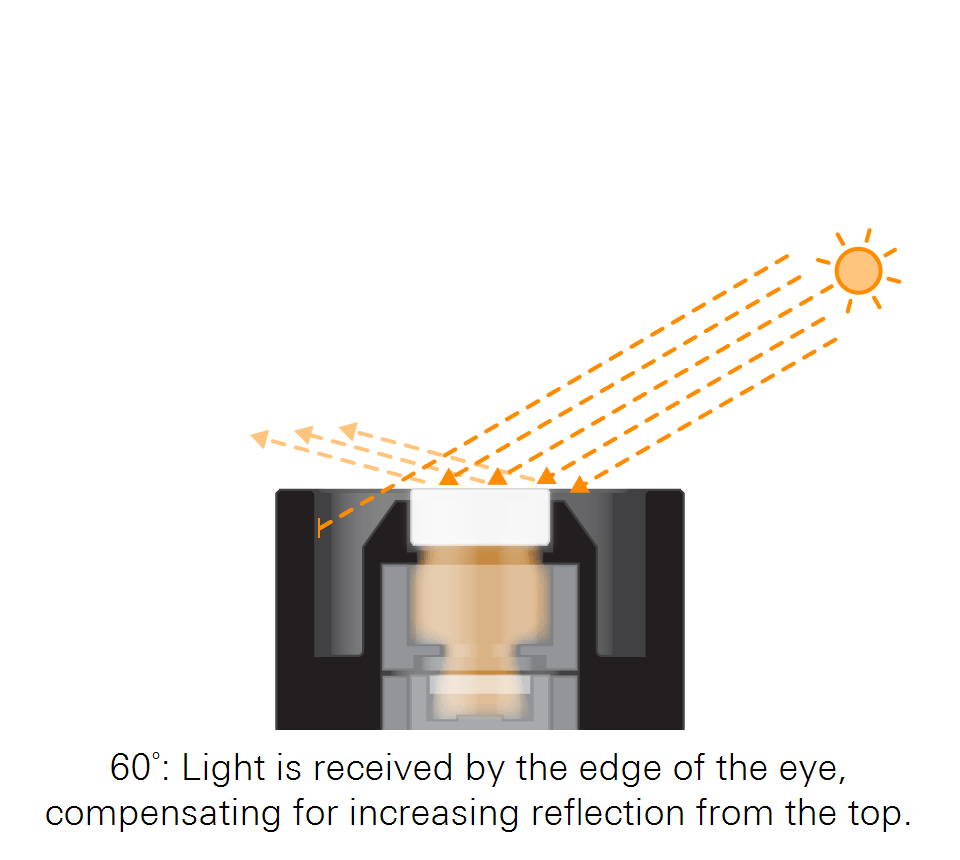
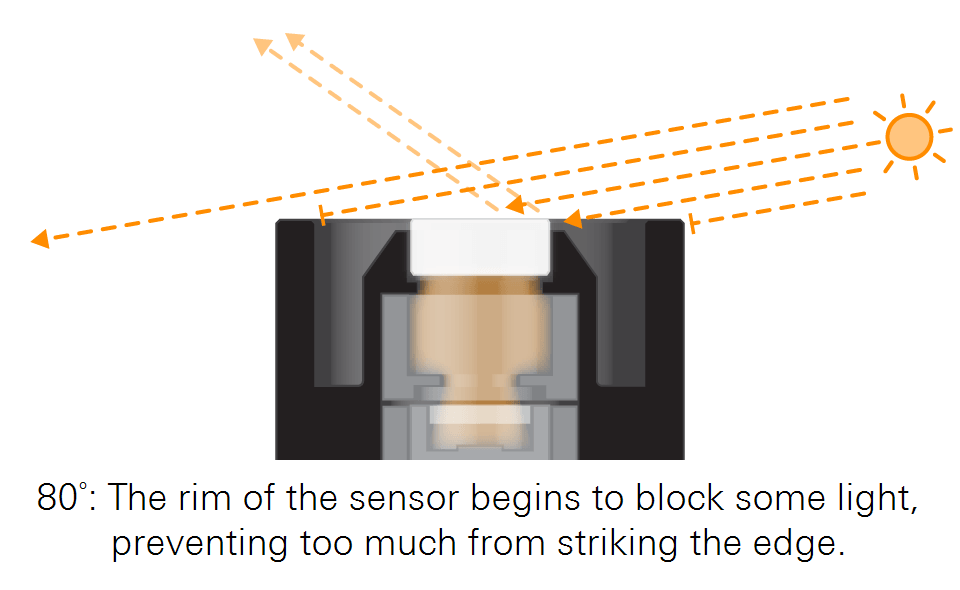
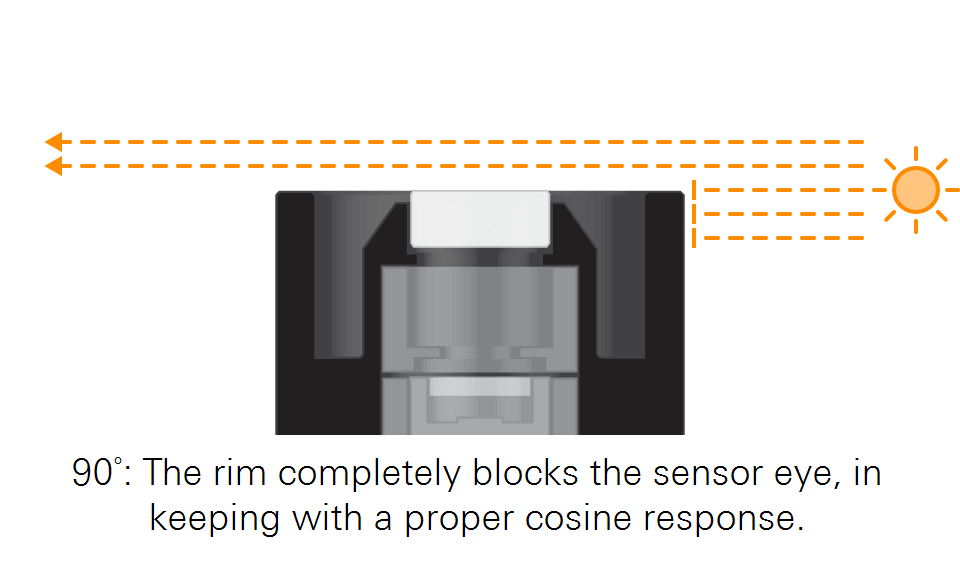
Figure 5‑2 shows how the design of the sensor creates the proper cosine response. Radiation is received by an acrylic disc called a diffuser, or eye. When radiation strikes with a greater angle of incidence, more is received by the edge of the eye. This compensates for increasing reflection from top surface as the angle of incidence grows larger. Beyond an angle of about 80°, the rim of the sensor begins to block some light in order to maintain the correct response as more radiation is received by the edge of the eye. At a 90° angle of incidence, the rim completely blocks the eye, in keeping with a proper cosine response.
Spectral Response
The spectral response of the LI-200R is not equal to the ideal (equal sensitivity from 280 to 2800 nm), but the instrument provides a good measurement of solar radiation when it is used to measure unobstructed daylight.
Changes in the spectral distribution of incident light, coupled with the non-uniform response of the sensor, can lead to measurement errors. Hull1 shows that in the visible spectrum (400 to 700 nm), the spectral distribution of sun plus sky radiation on a horizontal plane is remarkably constant, even when clear and overcast skies are compared. Gates2, however, observed that the spectral distribution of solar radiation in the near-infrared (≈ 700 to 1400 nm), where water vapor absorption takes place, differs on cloudy and clear days. Radiation measurements at low solar elevation angles can show significant error because of atmospheric absorption. This is a small part of the daily total so that observed errors have a negligible effect on daily integrations.

The area under the spectral irradiance curve of the source is directly proportional to the energy received by a horizontal surface. Under typical conditions, energy received on a completely overcast day has been estimated to be near 11% of that received on a clear day. When both spectral distributions are weighted according to a typical response curve of a silicon photodiode, the response on an overcast day is 12.6%. Therefore, errors due to the spectral response of the photodiode, induced under different sky conditions, will be small. Field tests of Federer and Tanner4, and Kerr, Thurtell and Tanner5 confirm this conclusion.
Calibration
Each LI-COR radiation sensor is fully calibrated at the factory, and no user calibration is needed. Acquire the calibration for your sensor by entering the serial number at licor.com/support/home.html. The recommended recalibration interval is every 2 years. Return your sensor to LI-COR for recalibration (Factory Recalibration).
Each LI-200R Pyranometer is calibrated against an Eppley Precision Spectral Pyranometer under natural daylight conditions in units of W m-2. Instantaneous paired sensor and reference readings are taken every minute throughout the day for several days. Manual and statistical methods are used to select data from which the calibration constant is derived. Under most natural daylight conditions, the uncertainty of calibration is ± 3% typical; ± 5% maximum.
Important Note: The LI-200R should only be used to measure unobstructed daylight. Measurements under vegetation, cloud cover, artificial lights, in a greenhouse, or of reflected solar radiation may not be accurate. The spectral response of the LI-200R does not include the entire solar spectrum (Figure 5‑3). Therefore, it must be used under lighting conditions that are the same as those under which it was calibrated.
